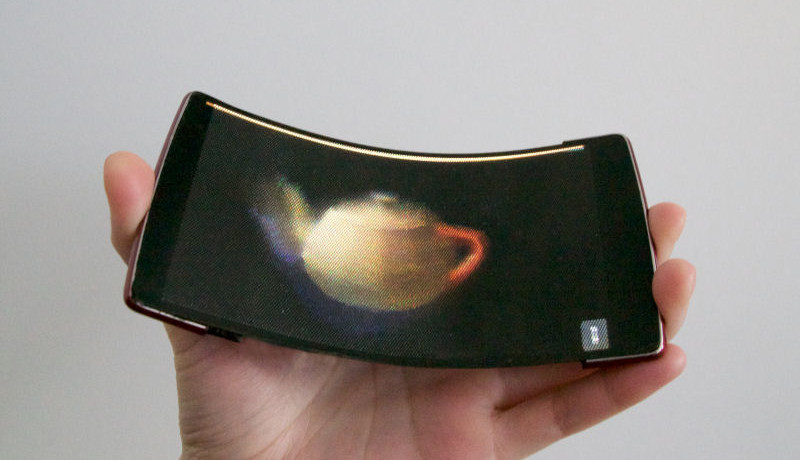Holoflex - The first holographic flexible smartphone
May 25, 2016
on
on

Researchers from the Human Media Lab at Queens University in Kingston, Canada, have developed a holographic, flexible smartphone. The Holoflex shows 3D-images with movement parallax and stereoscopy to multiple users simultaneously, without requiring head-position tracking or special glasses.
The image is displayed on a 1920x1080-pixel FOLED (Flexible Organic Light Emitting Diode) touchscreen display. The images are created using 12-pixel wide circular elements, each of which gives the complete view of the 3D-object from a particular viewpoint. These elements are projected by a 3D-printed flexible micro-lens array with more than 16,000 fish-eye lenses. The final image has a resolution of 160x104 pixels and can be viewed from all directions by rotating the phone.
The phone is also fitted with a sensor that detects bending of the screen, which, for example, can be used to move objects along the z-axis.
More information: www.hml.queensu.ca/blog/holoflex.
The image is displayed on a 1920x1080-pixel FOLED (Flexible Organic Light Emitting Diode) touchscreen display. The images are created using 12-pixel wide circular elements, each of which gives the complete view of the 3D-object from a particular viewpoint. These elements are projected by a 3D-printed flexible micro-lens array with more than 16,000 fish-eye lenses. The final image has a resolution of 160x104 pixels and can be viewed from all directions by rotating the phone.
The phone is also fitted with a sensor that detects bending of the screen, which, for example, can be used to move objects along the z-axis.
Read full article
Hide full article



Discussion (0 comments)